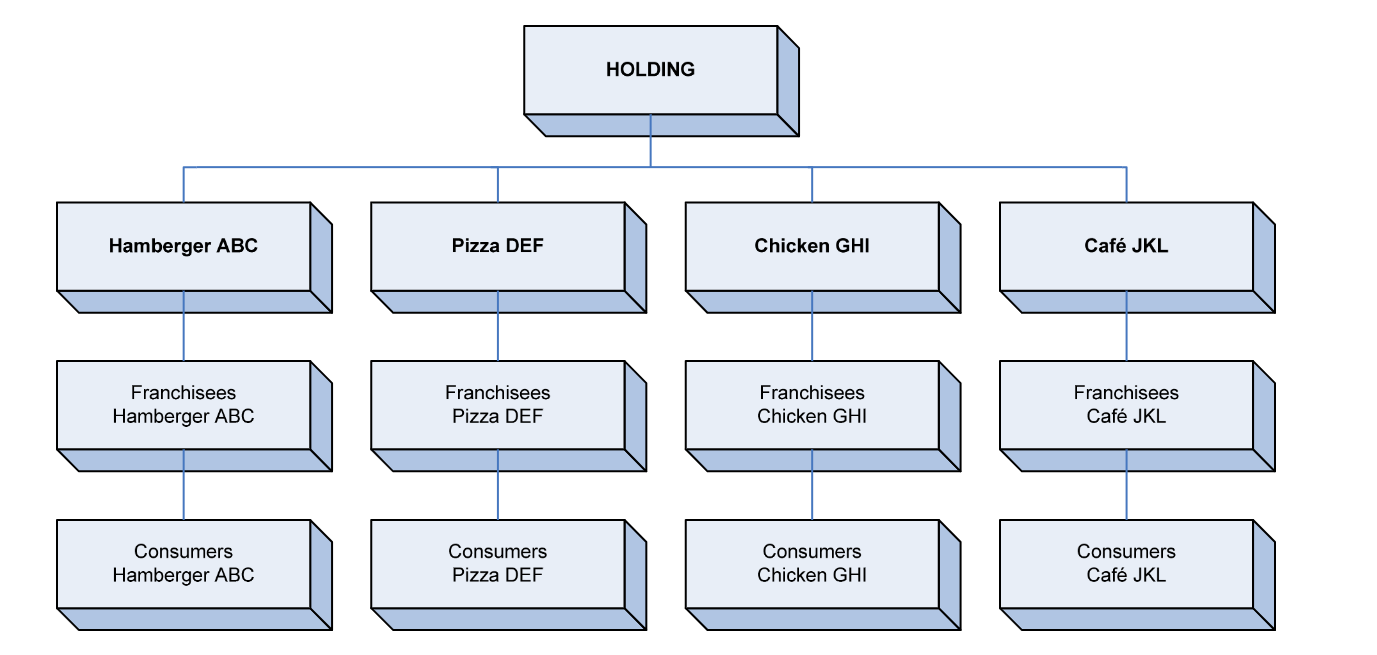Georges Sayegh, A.S.D., C. Adm., Fellow CMC of Quebec and Ontario, is an expert- consultant in franchising and technology transfer. He is also the author of 18 books on franchising and related businesses. To reach him: gsayegh@gsayegh.com; Tel: (514) 216-8458.
Multi-concept (multi-brand) franchises and multi-franchises are not new phenomena. Before delving deeper into the subject, the author has extracted a few definitions from his dictionary entitled “Dictionnaire et Lexique Français-Anglais de la Franchise”, including:
‟Multi-concept franchisor – Franchisor who creates, develops or provides multiple of franchise concepts. Syn.: multi-brand franchisor.”

The multi-concept model exists in two distinct contexts. The first is where the franchisor owns more than one brand, and the second is where the franchisor owns more than one franchise system – referred to in this document as a “multi-concept or multi-brand franchisor.” The franchisor may wish to operate these brands or franchise systems independently of each other, or there may be an advantage in linking the brands and openly communicating this association to the relevant market.
One example is Dine Brands Global Inc. a publicly listed food and beverage company headquartered in Glendale, California, USA. Founded in 1958 as IHOP, it operates franchised and company-owned full-service restaurants, including three restaurant concepts, Applebee’s Neighborhood Grill & Bar, International House of Pancakes and Fuzzy’s Taco Shop.


A franchisor who owns more than one brand has the advantage of being able to compete either in several sectors, or under different brands within the same sector. In each case, the franchisor has diversified interests and is able to offer a wider range of products and services than that offered by a single brand. This diversification will naturally lead to potential synergies and increased sales and profit potential.
Advantages for multi-concept franchisors include:
- Marketing and brand recognition
- Expertise in site selection
- Access to capital
- Purchasing savings
- Control and information systems
- New product development
- Development of human resources programs
Disadvantages for multi-concept franchisors include:
- Difficulty focusing on a particular unit
- Difficulty understanding market dynamics and identifying opportunities for growth and expansion
- Finance and accounting
- Human resource requirements
- Increased marketing program
- Relations with multi-concept franchisees: more difficulties in case of disagreement
- Increased competition from multi-franchise owners in the same market
As for the concept of multi-franchises (Multi-unit franchise), we find the following definition:
“Multi-unit franchise – Agreement by which a franchisor grants a franchisee a specific territory in which the latter must open a certain number of establishments according to a predetermined schedule without, however, granting him the right to sub-franchise. Failure to comply with the development timetable may result in the loss of the right of exclusivity, allowing the franchisor to grant other franchises in that
territory. Unlike a master franchise, the holder of a multi-unit franchise may not grant a sub-franchise within its territory and may operate only its own establishments.‟

One example is Greg Flynn who owned more than 2,400 franchised restaurants. By 2012, he had become the first American franchisee to reach the billion-dollar mark. Flynn started out like anyone else, buying his first Applebee’s franchise in 1999.
Business models have their pros and cons, and multi-franchises are no exception. Here are just a few examples:
Advantages of multi-franchising include:
- Chain market share
- Working with an established brand image
- Higher revenue potential
- Larger footprint and customer base
- Business leverage
- Improved stability
- Process of streamlining bulk supply and shared marketing
Disadvantages of multi-franchising include:
- Requires experience
- Not understanding market potential and saturating it
- Complexity of multi-unit franchise operations
- Difficulty in differentiating their units from those of their competitors
- Taking a back seat while other managers diversify their operations
- Profits take time
- Return on investment takes longer to establish
- Bigger team means more challenges
- Risk is higher with more units
- Investment is higher
Reflections
Below are a few points that the multi-franchisee should analyze before embarking on such an operation, including:
- Does the franchisee understand what it takes to operate several multi-franchises?
- Does the franchisee understand the opportunity and risks involved?
- Is the multi-franchisee comfortable delegating operations, or does he prefer to retain control of all details?
- Is he ready to take on the challenges of a larger team?
- Is the multi-franchisee a learner, eager to discover new things?
- How risk-averse is he?
Points to consider when drawing up the contract:
- Franchisee’s right to own multi-units
- Territory
- Contract duration
- Operational assistance
- Multi-franchise training
- Quality control
- Advertising and public relations
- Multi-franchise fees
- Payment procedures
- Purchase of goods and services
- Non-competition agreements
- Registration and reporting requirements
- Assignment or transfer
- Application of franchises
- Franchise termination and related obligations
- Dispute resolution
- Compliance with the law
- Applicable law
- Force majeure
- Confidentiality
- Legal status of the parties
- Exclusivity of territorial rights
- Setting performance criteria for the multi-franchisee and sanctioning breaches
- Maintaining the franchisor’s influence on multi-franchisees
In conclusion, the popularity of multi-franchising is well established. Data from leading market studies in the franchise sector have analyzed this trend and found tangible evidence that owners of more than one location are more common than we think. Today, there are an estimated 45,000 multi-unit owners in the U.S., or 228,000 units, representing more than half (54.8%) of all franchise business units.
Multi-franchising is very popular, and many people have achieved great success by practicing it. Carefully considering and planning the creation of a multi-franchise can be a lucrative and rewarding venture.
However, if the multi-franchisee is planning to embark on this adventure and opts not to surround himself or herself with knowledgeable professionals when expanding, this could be detrimental.

